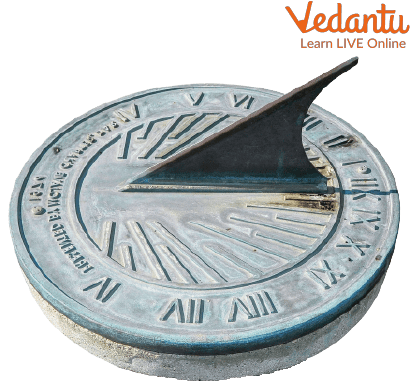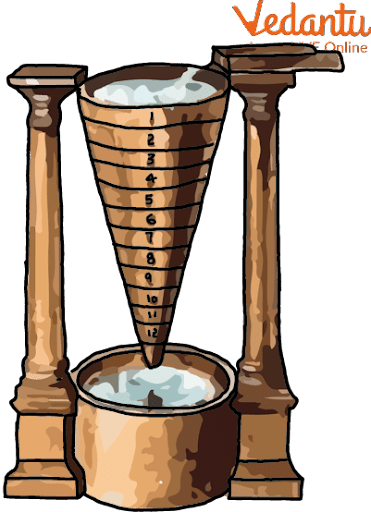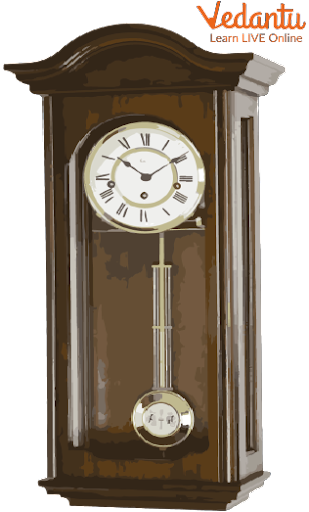




How to Read Clocks and Solve Time Problems
The tool used for measuring time is a clock. Clocks have markings at equal distances on a circular surface. It is divided into 12 parts, and one cycle of the hour hand through those 12 segments is considered half a day. The hour hand goes twice around those 12 segments to complete a day. There are minute hands on a clock as well that go round the segments once to complete an hour. The second hand on a clock goes around those segments to complete a minute.
Measurement of Time
On a clock, the two major hands have different lengths and one end is fixed at the centre of the dial.
The small and wider hand is known as the hour hand.
The longer and thinner hand is the minute hand.
The hour hand moves slower than the minute hand.
The third hand is the second hand, and one round the clock makes it one minute.
The hour hand moves through the dial and completes 12 hours. The hour hand starts from the number 12 and goes across the dial to again reach 12 after completing one round around the clock, and thus one hour is complete. The minute hand completes one round of the dial in 1 hour. The minute hand completes one division in one minute, which is, say, 1 to 2 on the clock. The second hand is not commonly seen, but if a clock has a second hand, it completes a round of the dial in one minute.
The following is the relation between time and seconds:
24 hours = 1 day
60 minutes = 1 hour
60 seconds = 1 minute
How to Measure Time?
Time can be measured by various tools, and many techniques have been adapted over time around the world for measuring time. Some of these are as described below.
Sundial
The oldest method for time measurement was done by the timekeepers in Ancient Egypt and Sumer dated almost 1500 BC. They used the shadow of the sun to determine the time.
It does not require an elaborate arrangement and resources for understanding time. A thin, angled object called a gnomon is used to cast a shadow on markers made on a circular plate indicating the time of the day.

Sundial
Water Clocks
The water clocks in the earliest days were basically stone pots having sloped sides which made the water drip out at a constant rate from a small hole at the base. The pot has markers on the inner side, which denote the different water levels according to the passage of time.
To achieve better accuracy in water clocks, they were mechanised to control the flow of water as constantly as possible. As it involves water, there could be variations due to variations in the temperature of the water, and that could be 30 minutes per day.

Water Clock
Mechanical Clocks
The mechanical clocks were much more accurate as they used gears that released energy in regular intervals using a swinging pendulum. Galileo is known to have invented the pendulum clock and had a very prominent accuracy of less than one minute per day, which he achieved by using a weighted pendulum.
The pendulum would swing at a consistent rate and thus regulate the speed in turning of gears, making it tick at regular intervals. These clocks were the first edition of the modern-day analogue clocks that we have.

Mechanical Clock
Interesting Facts About Time and Clock
Levin Hutchins was the inventor of the infamous alarm clock. He lived in Concord, New Hampshire, in the USA, and he wanted to ensure he would wake up at 4 a.m. to reach work on time.
The oldest mechanical working clock in the entire world is present in Salisbury Cathedral in England.
The term “o’clock” we use for describing time is obtained from the term “of the clock” and is said to come from a 15th-century reference to a mediaeval mechanical clock.
Summary
Time and seconds measurement has been done in various ways through the ages. These techniques of time measurement evolved with every era. Each method of time measurement evolved through ages in order to improve the accuracy of time measurement. Time measurement moved from usage of celestial bodies and their positions to usage of mechanical gears to make it more accurate and reliable. The usage of mechanical clocks made us very less dependent and we could all have our own idea of time.
FAQs on Time Measurement: Understand Hours, Minutes, and Seconds
1. What is time measurement in Maths for kids?
Time measurement is how we figure out how long something takes. Just like we use a ruler to measure length, we use clocks and calendars to measure time. We measure short periods using seconds, minutes, and hours, and longer periods using days, weeks, and months.
2. What are the three main units for measuring time on a clock?
The three main units we use to tell time on a clock are:
- Hours: The longest unit on a clock, shown by the short hand.
- Minutes: There are 60 minutes in one hour. The long hand on a clock shows the minutes.
- Seconds: The shortest unit. There are 60 seconds in one minute. Some clocks have a third, very thin hand that moves quickly to count the seconds.
3. How do you read the time using the hour and minute hands on a clock?
To read a clock, you need to look at both hands. The shorter hand is the hour hand; whichever number it points to (or has just passed) is the hour. The longer hand is the minute hand. To read the minutes, you count in fives for each number on the clock. For example, if the minute hand points to 4, it means 20 minutes (4 x 5) past the hour.
4. Why is it important to know the difference between 'a.m.' and 'p.m.'?
It's very important to know the difference between a.m. and p.m. because it tells us if the time is in the morning or the afternoon/night. A day is split into two 12-hour parts. A.M. (ante meridiem) is from midnight to noon, which includes the morning. P.M. (post meridiem) is from noon to midnight, which covers the afternoon and evening. So, 7 a.m. is breakfast time, but 7 p.m. is dinner time.
5. How can understanding time measurement help in daily activities?
Understanding time helps you organise your day. For example, it helps you know:
- When to wake up for school.
- How much time you have to play before doing homework.
- When your favourite cartoon show starts on TV.
- How long you need to brush your teeth.
It helps make sure you are on time for everything and can plan your fun activities!
6. If the minute hand is on the 6, why do we say it is '30 minutes' or 'half past'?
This is because a full circle of the clock is 60 minutes, and the number 6 is exactly halfway around the clock face. So, when the long minute hand points to 6, it has travelled for 30 minutes (6 x 5 = 30), which is half of a full hour. That's why we call it 'half past' the hour.
7. What is the relationship between hours, minutes, and seconds?
The relationship between these units is fixed. You can remember it like this:
- 60 seconds make 1 minute.
- 60 minutes make 1 hour.
- 24 hours make 1 full day.
This helps us convert one unit of time to another, like calculating that half an hour is 30 minutes.















